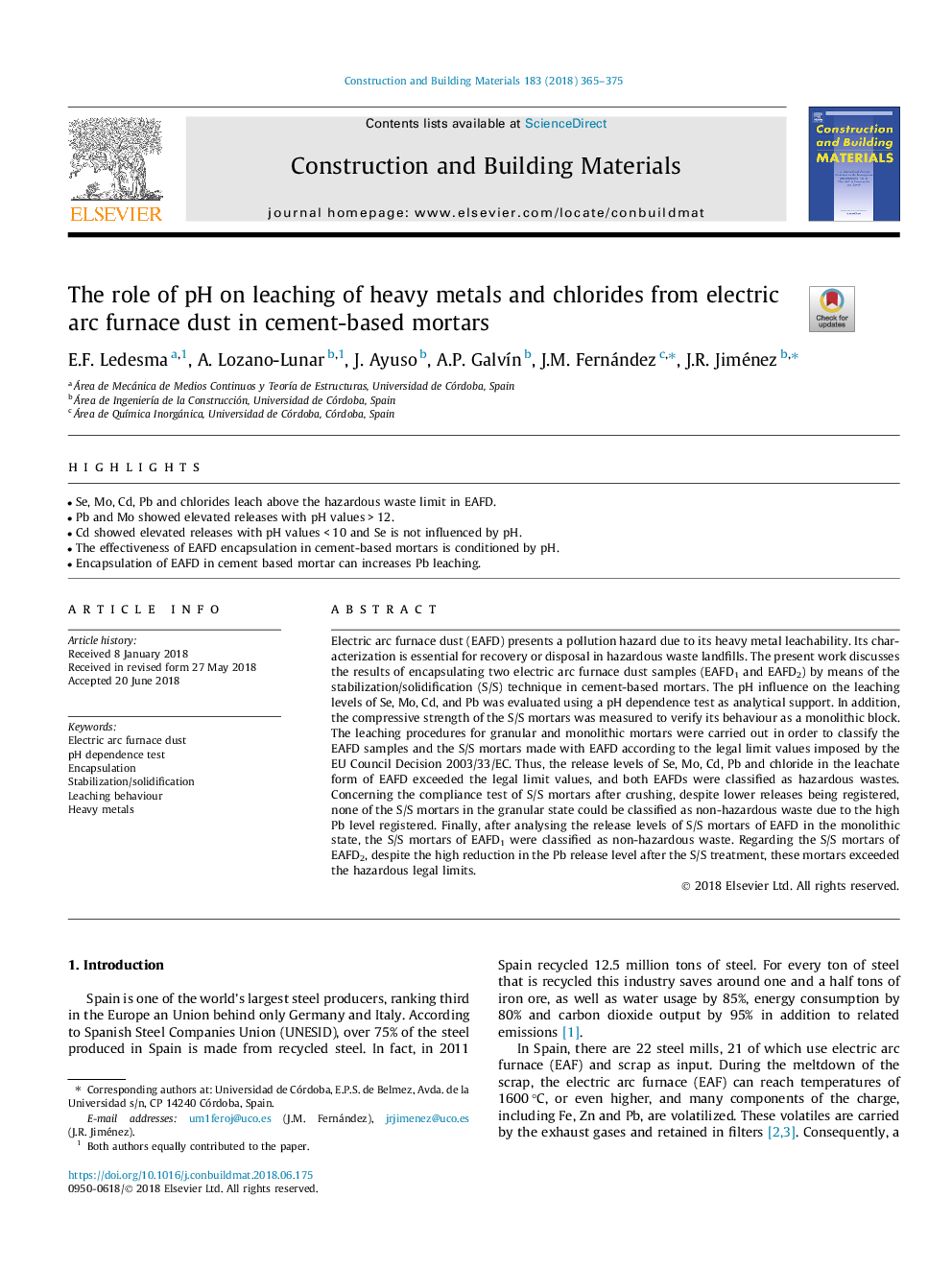| Article ID | Journal | Published Year | Pages | File Type |
|---|---|---|---|---|
| 6712189 | Construction and Building Materials | 2018 | 11 Pages |
Abstract
Electric arc furnace dust (EAFD) presents a pollution hazard due to its heavy metal leachability. Its characterization is essential for recovery or disposal in hazardous waste landfills. The present work discusses the results of encapsulating two electric arc furnace dust samples (EAFD1 and EAFD2) by means of the stabilization/solidification (S/S) technique in cement-based mortars. The pH influence on the leaching levels of Se, Mo, Cd, and Pb was evaluated using a pH dependence test as analytical support. In addition, the compressive strength of the S/S mortars was measured to verify its behaviour as a monolithic block. The leaching procedures for granular and monolithic mortars were carried out in order to classify the EAFD samples and the S/S mortars made with EAFD according to the legal limit values imposed by the EU Council Decision 2003/33/EC. Thus, the release levels of Se, Mo, Cd, Pb and chloride in the leachate form of EAFD exceeded the legal limit values, and both EAFDs were classified as hazardous wastes. Concerning the compliance test of S/S mortars after crushing, despite lower releases being registered, none of the S/S mortars in the granular state could be classified as non-hazardous waste due to the high Pb level registered. Finally, after analysing the release levels of S/S mortars of EAFD in the monolithic state, the S/S mortars of EAFD1 were classified as non-hazardous waste. Regarding the S/S mortars of EAFD2, despite the high reduction in the Pb release level after the S/S treatment, these mortars exceeded the hazardous legal limits.
Keywords
Related Topics
Physical Sciences and Engineering
Engineering
Civil and Structural Engineering
Authors
E.F. Ledesma, A. Lozano-Lunar, J. Ayuso, A.P. GalvÃn, J.M. Fernández, J.R. Jiménez,
